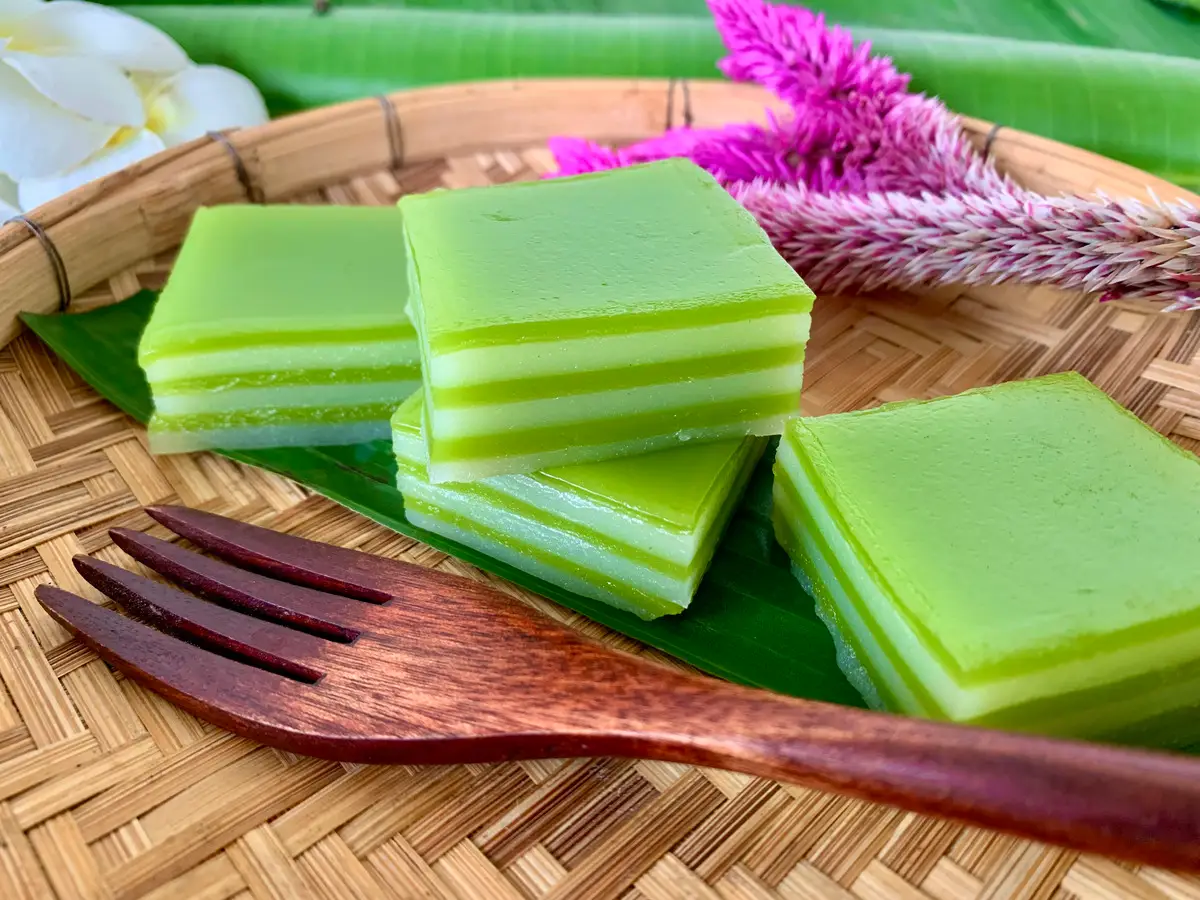
Khanom Chan (ขนมชั้น) is a traditional Thai dessert known for its soft texture and striking layered shape. The word “Khanom” means sweet or dessert, while “Chan” refers to layers.
This is a dessert from ancient Thai cuisine, influenced by preparation techniques and ingredients introduced by Chinese traders to the region. It is commonly seen at festivals and ceremonies due to its auspicious meaning. Its exact origin is not clearly documented, but it is a sweet that has been prepared and enjoyed for generations in Thailand.
Traditionally, Khanom Chan comes in two colours: green and white. The green colour is obtained from pandan essence, a leaf that imparts an aromatic flavour, while the white comes from the base mixture. In modern versions, natural or artificial colourings can be used to create different shades and flavours, such as pink, purple and yellow.
Once cooled, Khanom Chan is cut into small squares or diamonds. The layered colors stand out when cut, making the dessert visually appealing. It is usually served on decorative trays or individual plates at festive events, religious ceremonies, weddings, and festivals such as Thai New Year (Songkran). Its colorful appearance and multiple layers symbolize growth, progress, and good fortune.
Sometimes it is served with tea or coffee, which complement its sweetness. On special occasions, it may be accompanied by fresh fruit or decorated with edible flowers.
It can be eaten with your hands or using chopsticks. It is common to enjoy it layer by layer to appreciate the texture and delicate flavor that each layer offers. Some also choose to eat it all together to experience the combination of flavors.

How to make Khanom Chan at home
Source: https://reporteasia.com/cultura/cocina-asiatica/2024/07/07/khanom-chan-el-arte-del-dulce-tailandes-en-capas/


